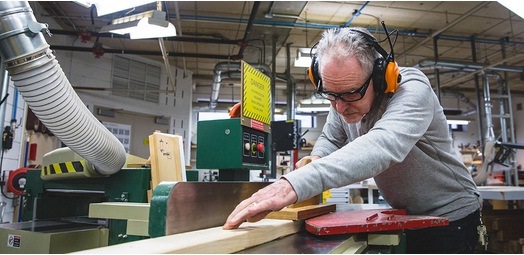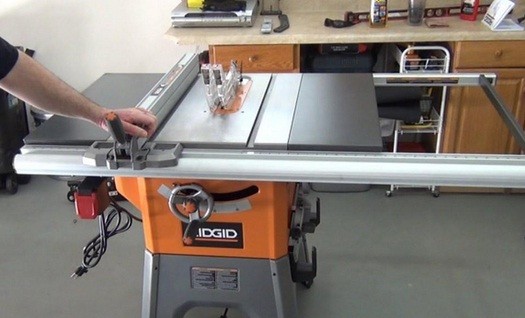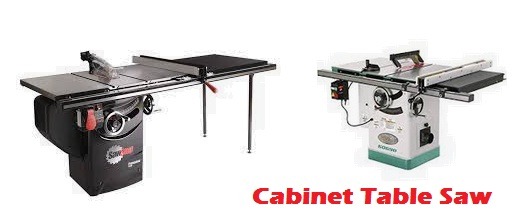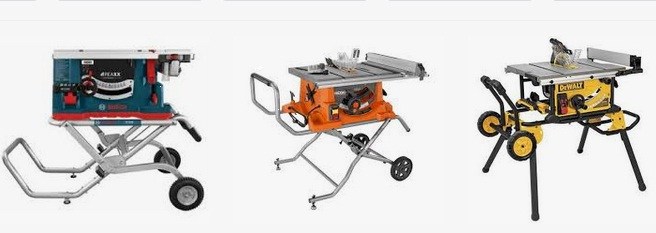As an Amazon Associate, I earn from qualifying purchases.

Sawdust is irritating to get in your eyes, and it can lead to a dangerous distract ion during a cut. Larger splinters can damage your eyes permanently. Dust and splinters are the usual culprits for eye injuries at the table saw, but so are carbide chips and blade teeth.
You can avoid these injuries by wearing a pair of comfortable safety glasses. Spend a little more to buy pair that is scratch, fog, and static resistant. They should protect your eyes from all sides. Ordinary prescription eyeglasses are not safety glasses, no matter what type of lens they have.
You can buy oversized safety glasses to fit around your eyeglasses, if need be, or even have your prescription lenses fitted for safety glass frames. Buy a neck strap for your safety eyewear, and keep the glasses around your neck whenever you’re in the shop. They’re a good idea for almost all wood working tasks.
Table saws produce high-frequency blade noise that can damage your hearing over time. Saws produce around 100
decibels of noise, and anything more than 85 decibels is unsafe. Power saws, routers, planers, and shop vacs can damage your hearing, too.
There are three options for hearing protection: ear muffs, foam inserts, and ear bands. Choose the style most comfortable for you. Ear muffs and bands are easy to slip on and off. Foam inserts are inexpensive and fit right into your ear canals, hut the feel takes a little getting used to. Be sure the style you choose is rated to reduce high-frequency noise by 25 decibels or more. Replace them at the first sign of deterioration.
Other apparel for safer sawing
Comfortable rubber-soled athletic shoes provide good traction on slippery sawdust and provide some cushioning if you have a concrete shop floor. You may want to wear a shop apron to keep your clothes cleaner, but do not stow loose items in the apron pockets during sawing.
They could slip out when you bend over the saw and end up in the blade. Long-sleeved shirts or a light coat may be necessary in cooler months. Roll up loose sleeves when working at the saw to keep them out of harm’s way. Do not wear gloves when using a table saw.
Your hands come closer to the blade than any other body part, and gloves can get caught in the blade. If the shop is cold enough for gloves, warm up the space with a heater to make shop time more comfortable.
First aid
Create a safety area in the shop where you can get to it easily in the event of an accident. Mount a first-aid kit on the wall that contains provisions such as gauze, bandages, and a tourniquet, for treating lace rations, puncture wounds, and eye injuries. Install a phone in the shop or make it a practice to carry your cordless or cell phone with you.
Program the phone with a few speed dial numbers and keel) the phone close by in the event you need to make an emergency call. Hang a fire extinguisher near the first aid kit. Buy one rated for both chemical and electrical fires.
Try not to work in the shop when no one else is home if you can avoid it. Someone should be aware that you are working with machinery and check on you from time to time while you work.
Link Belts
One way to ensure a smoother running contractor’s saw is to replace the automotive-style drive belt with a link belt. Link belts are usually colored red and consist of interlocking rubber segments. Oftentimes you’ll buy link belts by the foot from woodworking supply catalogs— they can be used just as easily on other machinery, such as drill presses.
Link belts form a tighter grip around the pulley sheaves than V belts, and they last just as long or longer. If you can order machined pulleys along with the link belt, it may be worth your while to invest in new pulleys, too. Sometimes the pulleys that come standard on economy saws are cast rather than machined, and they may not spin in a flat orbit or evenly on their axes.
Machined pulleys are manufactured to higher tolerances so they’ll spin smoothly. Lay the metal rule of a combination square across the blade body (be sure not to rest it on the carbide teeth) and hold the blade and rule up to a light to check for war page.
There should be no slivers of light appearing between the rule and the blade body. Rotate the blade and check it with the rule all around. Warped blades should be replaced.




Leave a Reply